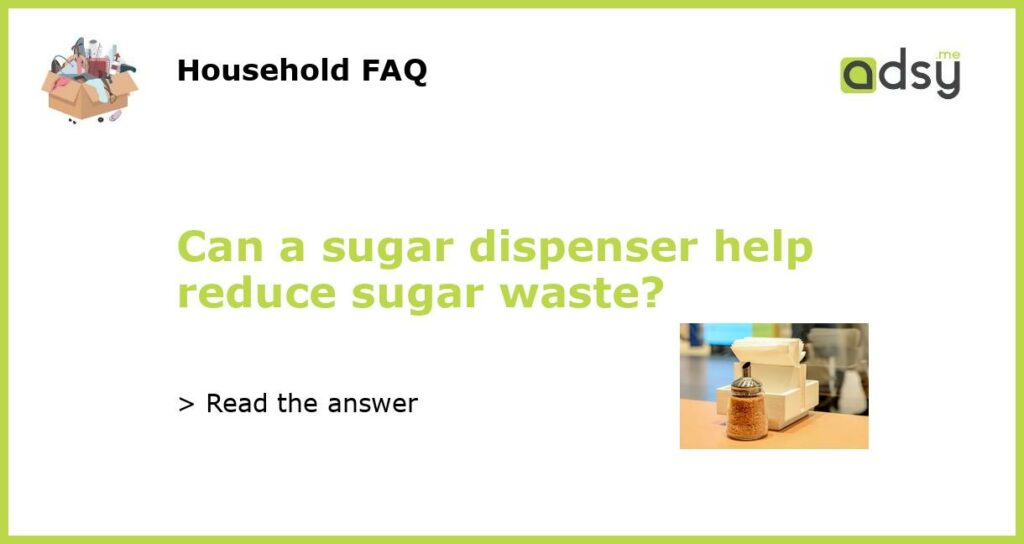What is sugar waste and why is it a problem?
Sugar waste refers to any sugar that is unused or discarded, leading to unnecessary waste and potential environmental damage. This can include excess sugar added to beverages, leftover sugar from restaurant tables, or sugar that is expired or spoiled.
The production and disposal of sugar waste can have significant negative consequences for the environment and human health. When sugar is discarded, it often ends up in landfills where it releases harmful greenhouse gases as it decomposes. Additionally, the extraction and processing of sugar can contribute to deforestation, soil erosion, and water pollution.
The role of sugar dispensers in reducing waste
Sugar dispensers have the potential to greatly reduce sugar waste by allowing users to control and measure the amount of sugar they use. Instead of having pre-packaged sugar packets or open sugar containers that can lead to over-pouring, a sugar dispenser provides a controlled portion size.
By having a dispenser, individuals can take only what they need, reducing the chances of excess sugar being discarded. This can be especially beneficial in settings such as restaurants, cafes, and offices where large quantities of sugar are used daily.
Benefits of using sugar dispensers
There are several benefits to using sugar dispensers to reduce sugar waste:
- Portion control: Sugar dispensers allow users to measure out the exact amount of sugar they want, reducing the likelihood of over-pouring or adding excess sugar to beverages or food.
- Cost savings: By providing a controlled portion size, sugar dispensers help reduce the overall amount of sugar that is used, leading to cost savings over time.
- Environmental impact: By reducing sugar waste, the use of sugar dispensers can contribute to a decrease in the amount of sugar that ends up in landfills, thereby reducing greenhouse gas emissions and minimizing environmental harm.
- Convenience: Sugar dispensers can be easily refilled and maintained, making them a convenient option for both individuals and businesses.
Implementing sugar dispensers in different settings
The use of sugar dispensers can be implemented in various settings, including:
- Restaurants: Sugar dispensers can be placed on tables or in condiment stations, allowing customers to control the amount of sugar they add to their food and beverages.
- Cafes and coffee shops: Providing sugar dispensers at self-serve stations or alongside coffee and tea options can empower customers to customize their drinks and reduce sugar waste.
- Office spaces: Placing sugar dispensers in communal kitchens or break rooms can encourage employees to use only the amount of sugar they need, reducing waste.
- Public spaces: Sugar dispensers can be installed in public areas such as parks or community centers to provide a controlled portion size for individuals and reduce overall sugar waste.
Supporting sustainable practices
In addition to implementing sugar dispensers, there are other steps that can be taken to support sustainable practices and further reduce sugar waste:
- Educating and raising awareness: Providing information about the environmental impact of sugar waste can raise awareness and encourage individuals to make more conscious choices.
- Offering alternative sweeteners: Providing options such as natural sweeteners or sugar substitutes can offer individuals alternatives to traditional granulated sugar, reducing both waste and overall sugar consumption.
- Encouraging recycling: Implementing recycling programs and ensuring proper disposal of sugar containers can further reduce the environmental impact associated with sugar waste.
- Supporting local and sustainable sugar production: Choosing sugar products from sustainable and ethical sources can help minimize the negative environmental and social impacts associated with sugar production.






